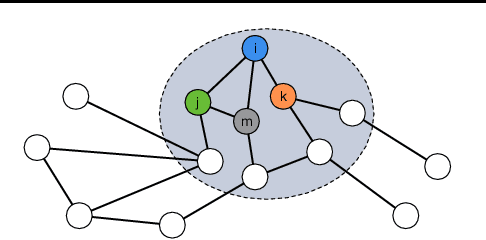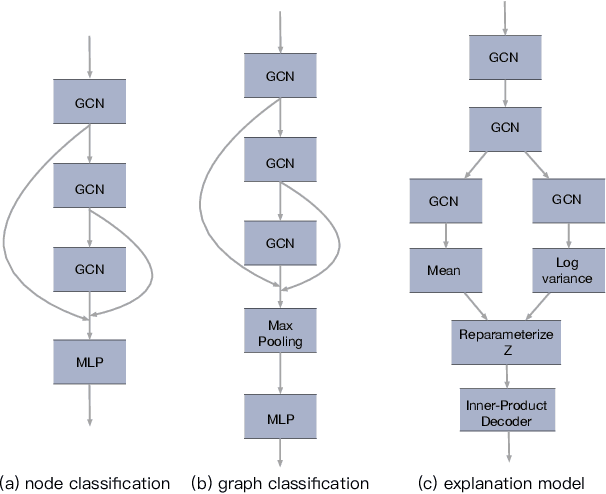Hao Lan
Debiasing Graph Representation Learning based on Information Bottleneck
Sep 02, 2024Abstract:Graph representation learning has shown superior performance in numerous real-world applications, such as finance and social networks. Nevertheless, most existing works might make discriminatory predictions due to insufficient attention to fairness in their decision-making processes. This oversight has prompted a growing focus on fair representation learning. Among recent explorations on fair representation learning, prior works based on adversarial learning usually induce unstable or counterproductive performance. To achieve fairness in a stable manner, we present the design and implementation of GRAFair, a new framework based on a variational graph auto-encoder. The crux of GRAFair is the Conditional Fairness Bottleneck, where the objective is to capture the trade-off between the utility of representations and sensitive information of interest. By applying variational approximation, we can make the optimization objective tractable. Particularly, GRAFair can be trained to produce informative representations of tasks while containing little sensitive information without adversarial training. Experiments on various real-world datasets demonstrate the effectiveness of our proposed method in terms of fairness, utility, robustness, and stability.
OrphicX: A Causality-Inspired Latent Variable Model for Interpreting Graph Neural Networks
Mar 29, 2022



Abstract:This paper proposes a new eXplanation framework, called OrphicX, for generating causal explanations for any graph neural networks (GNNs) based on learned latent causal factors. Specifically, we construct a distinct generative model and design an objective function that encourages the generative model to produce causal, compact, and faithful explanations. This is achieved by isolating the causal factors in the latent space of graphs by maximizing the information flow measurements. We theoretically analyze the cause-effect relationships in the proposed causal graph, identify node attributes as confounders between graphs and GNN predictions, and circumvent such confounder effect by leveraging the backdoor adjustment formula. Our framework is compatible with any GNNs, and it does not require access to the process by which the target GNN produces its predictions. In addition, it does not rely on the linear-independence assumption of the explained features, nor require prior knowledge on the graph learning tasks. We show a proof-of-concept of OrphicX on canonical classification problems on graph data. In particular, we analyze the explanatory subgraphs obtained from explanations for molecular graphs (i.e., Mutag) and quantitatively evaluate the explanation performance with frequently occurring subgraph patterns. Empirically, we show that OrphicX can effectively identify the causal semantics for generating causal explanations, significantly outperforming its alternatives.
Generative Causal Explanations for Graph Neural Networks
Apr 14, 2021



Abstract:This paper presents Gem, a model-agnostic approach for providing interpretable explanations for any GNNs on various graph learning tasks. Specifically, we formulate the problem of providing explanations for the decisions of GNNs as a causal learning task. Then we train a causal explanation model equipped with a loss function based on Granger causality. Different from existing explainers for GNNs, Gem explains GNNs on graph-structured data from a causal perspective. It has better generalization ability as it has no requirements on the internal structure of the GNNs or prior knowledge on the graph learning tasks. In addition, Gem, once trained, can be used to explain the target GNN very quickly. Our theoretical analysis shows that several recent explainers fall into a unified framework of additive feature attribution methods. Experimental results on synthetic and real-world datasets show that Gem achieves a relative increase of the explanation accuracy by up to $30\%$ and speeds up the explanation process by up to $110\times$ as compared to its state-of-the-art alternatives.
 Add to Chrome
Add to Chrome Add to Firefox
Add to Firefox Add to Edge
Add to Edge